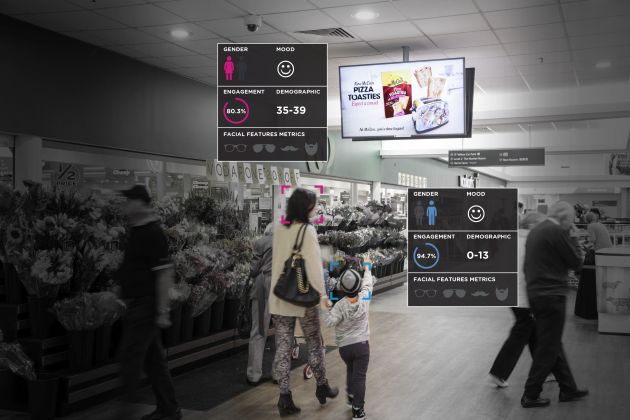
Imagine a petrol pump that could scan your face, work out your age, gender and the mood you were in, before serving a relevant ad in real time.
Such an Orwellian 'Big Brother' concept may have been the realm of science fiction not so long ago, but is now becoming a reality at bowsers, shops and gyms across the country.
VMO has begun rolling out the latest iteration of its Digital Outdoor Audience Real Time technology, DART 2.0, and AdNews can reveal some of the results of testing to date.
The software uses facial recognition technology and machine learning to map out a viewer's facial features to predict age, gender and, for the first time, mood.
While the original DART, which rolled out in 2014, could determine eight age demographics, the new version offers up insights across 18 demographic profiles. It can also recognise features such as glasses, beards and moustaches.
This granular analysis allows media planners to more accurate chart advertising strategies around target audience viewing patterns. This ultimately leads to higher engagement and less wastage of adspend. The average engagement of VMO screens in shops is 42%, while at petrol pumps its 89%.
This level of audience analysis offers a major breakthrough in the precision and accountability of outdoor media campaigns.
“DART measures about two million Australians on a weekly basis – it really has evolved to become a vary large audience measurement platform,” VMO managing director Anthony Deeble tells AdNews.
“We use our DART metric to enable us to programatically serve content. That means we can serve content to a particular demographic group, in a particularly geographic location in real time. We are able to be highly precise and target when serving content to a client's desired audience, which means greater efficiencies; they're targeting the audience they want to reach.”
The other added advantage of real-time measurement is accountability, providing insights back to clients into viewing habits across precise demographic groups.
VMO has been working with advertisers to test the technology out for the past seven weeks in VMO's petrol station network, at shops and within offices in New Zealand. The technology is also being rolled out acros VMO's health club network.
“In the On the Go vertical, we've noticed that females viewers tend to fill up and spend more time Wednesdays to Fridays as opposed to male viewers who are filling up more on Friday to Sunday,” Deeble says.
“These different viewing patterns across different demographic groups are really taking shape. For example, 54% of views are between 10am and 5pm in our petro circuit.”
At VMO's network of screens in shops, 52% of views are between 11am and 3pm, with Thursdays to Saturdays recording the most traffic.

In offices, the peak times are when people arrive at 8am and the standard lunch period from 12pm to 1pm.
In terms of mood, VMO is currently testing out whether viewers are happy, unhappy or neutral, but it is too early to establish meaningful patterns.
VMO plans to roll out DART 2.0 to its trans-Tasman network of 8,500 screens, with figure set to rise to more than 10,000 in 2017.
This growth will see VMO reach about 50% of the Australian population and a petrol pump near you.
Have something to say on this? Share your views in the comments section below. Or if you have a news story or tip-off, drop us a line at adnews@yaffa.com.au
Sign up to the AdNews newsletter, like us on Facebook or follow us on Twitter for breaking stories and campaigns throughout the day.


